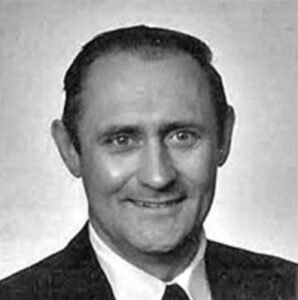 Le Dr Joseph E. Doninger est reconnu comme l’un des plus grands experts mondiaux en traitement du carbone et du graphite, avec plusieurs décennies d’expérience dans l’application concrète des technologies avancées du carbone. Avec une carrière distinguée s’étendant sur plus de 50 ans, le Dr Doninger a occupé des postes de haute direction au sein de plusieurs grandes entreprises industrielles et de matériaux, notamment chez Superior Graphite, où il a joué un rôle déterminant dans l’avancement des matériaux carbonés de qualité batterie.
Le Dr Joseph E. Doninger est reconnu comme l’un des plus grands experts mondiaux en traitement du carbone et du graphite, avec plusieurs décennies d’expérience dans l’application concrète des technologies avancées du carbone. Avec une carrière distinguée s’étendant sur plus de 50 ans, le Dr Doninger a occupé des postes de haute direction au sein de plusieurs grandes entreprises industrielles et de matériaux, notamment chez Superior Graphite, où il a joué un rôle déterminant dans l’avancement des matériaux carbonés de qualité batterie.
Au cours de ses 17 années chez Superior Graphite, le Dr Doninger a occupé plusieurs postes de direction, notamment ceux de premier vice-président à la technologie, vice-président à l’ingénierie et à la commercialisation des produits, vice-président à la fabrication et vice-président à la technologie. C’est à cette époque qu’il a contribué de manière décisive au développement de la célèbre pile Duracell, qui surpassait ses concurrentes grâce à sa composition en carbone supérieure. Son expertise en traitement du graphite et en science des matériaux a directement amélioré la longévité et l’efficacité des solutions de stockage d’énergie.
En dehors de Superior Graphite, la carrière impressionnante du Dr Doninger comprend des postes de direction chez Applied Industrial Materials Corporation et International Minerals and Chemical Corporation, où il s’est spécialisé en ventes, marketing et développement technique dans les domaines des minéraux industriels et des matériaux à base de carbone.
Le Dr Doninger est titulaire d’un doctorat en génie chimique de la Northwestern University. Il est également l’inventeur de six brevets et l’auteur de plus de 29 publications et communications techniques portant sur le traitement du graphite, les applications minérales et les technologies de stockage d’énergie. Son travail a eu un impact majeur sur les avancées dans les batteries lithium-ion, les piles à combustible et les systèmes de stockage électrochimique à base de carbone.
À la suite de sa retraite, le Dr Doninger a choisi de mettre son expertise au service de Focus Graphite et Advanced Materials, convaincu par la qualité inégalée du gisement de graphite de Lac Knife, qu’il décrit comme le meilleur qu’il ait jamais rencontré au cours de sa carrière. Grâce à ses connaissances approfondies du secteur et à son esprit d’innovation, il a joué un rôle clé dans le développement de technologies de pointe pour optimiser le graphite en paillettes de haute pureté extrait des propriétés de Focus, le rendant parfaitement adapté aux applications de stockage d’énergie de nouvelle génération.
L’engagement du Dr Doninger envers l’avancement des solutions énergétiques à base de graphite et de carbone continue de façonner l’avenir des technologies de batteries, faisant de lui un leader incontournable dans le domaine des matériaux avancés.

